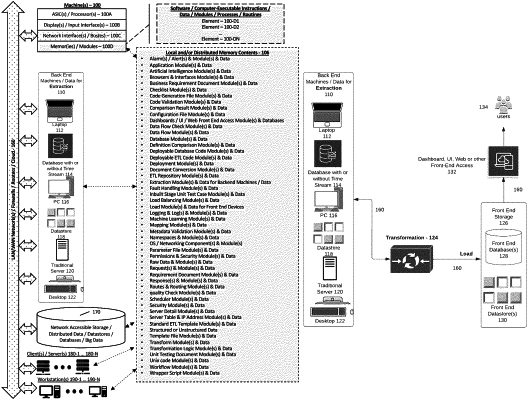| CPC G06F 16/254 (2019.01) [G06F 8/30 (2013.01); G06F 11/3604 (2013.01)] | 13 Claims |

|
1. A dynamic code generation process with configurable connections and variables for extraction, transformation, and load (ETL) processing and validation comprising the steps of:
(a) loading, by a code generator, an input requirement document from a source, said input requirement document including source information, transformation options, pre-staging information, staging information, provisional staging data, target provisional data, and provisional transformation data;
(b) converting, by the code generator, the input requirement document into an ETL template;
(c) loading, by the code generator, the ETL template;
(d) loading, by the code generator, a configuration file from the source, said configuration file includes a source table name, a target table name, a source connection, a target connection, a source description, a target description, a mapping description, a workflow description, an expression description, a parameter filename for the parameter file, path information for the parameter file, a schema name, and a session name;
(e) generating, by the code generator, workflows, database objects, and parameters based on the ETL template and the configuration file;
(f) storing, by the code generator in the parameter file, the parameters;
(g) deploying, by the code generator, the workflows as ETL code in an ETL repository, said ETL code corresponding to ETL transformations to be performed based on the input requirement document;
(h) deploying, by the code generator, the database objects as database code in a database;
(i) deploying, by the code generator in an ETL server, server code corresponding to the ETL code and the database code;
(j) loading, by a code validator, the ETL code, the database code, and the server code;
(k) executing, by the code validator, in-built stage unit test cases on the ETL code, the database code, and the server code; and
(l) capturing, by the code validator in a unit testing document, validation results of the in-built stage unit test cases on the ETL code, the database code, and the server code.
|